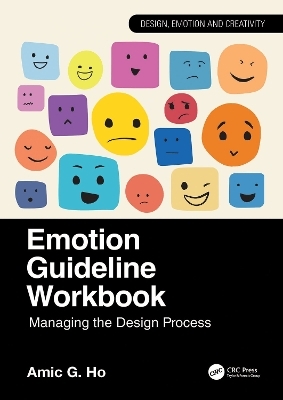
Emotion Guideline Workbook
Managing the Design Process
Seiten
2024
CRC Press (Verlag)
9781032664149 (ISBN)
CRC Press (Verlag)
9781032664149 (ISBN)
This book proposes a set of guiding principles with the intention of assisting the reader in regulating the emotional changes that occur throughout the design process. It is the perfect workbook for design, art and creative students, as well as their instructors, researchers, and other learners who are interested in emotion-driven design.
Manipulating the design process can be challenging for junior design, art and creative students. Besides understanding the approaches to managing the design factors with logical thinking, they can lack experience in handling emotional changes and concerns and initiative factors during the design process. As a result, they struggle to practice design and need guidance for enhancing their decision-making, evaluation, judgment, and motivation.
This book proposes a set of guiding principles with the intention of assisting the reader in regulating the emotional changes that occur throughout the design process. This book offers practical approaches to those who would like to incorporate emotion in their design processes, which contrasts with previous scholarly research that has mostly focused on the theoretical level. It provides guidance to the reader through the process of adapting to the emotional changes that may occur throughout the design process during their design studies. It contains a literature review, research methods and a discussion of the strengths and limitations. Featuring printable worksheets and additional tables to use as guidance, this highly practical text allows the reader to gain a full understanding of emotion in the design procedure through active involvement process.
The Emotion Guideline Workbook is perfect for design, art and creative students, as well as their instructors, researchers, and other learners who are interested in emotion-driven design. It will also appeal to students and academics in the fields of psychology and education.
Manipulating the design process can be challenging for junior design, art and creative students. Besides understanding the approaches to managing the design factors with logical thinking, they can lack experience in handling emotional changes and concerns and initiative factors during the design process. As a result, they struggle to practice design and need guidance for enhancing their decision-making, evaluation, judgment, and motivation.
This book proposes a set of guiding principles with the intention of assisting the reader in regulating the emotional changes that occur throughout the design process. This book offers practical approaches to those who would like to incorporate emotion in their design processes, which contrasts with previous scholarly research that has mostly focused on the theoretical level. It provides guidance to the reader through the process of adapting to the emotional changes that may occur throughout the design process during their design studies. It contains a literature review, research methods and a discussion of the strengths and limitations. Featuring printable worksheets and additional tables to use as guidance, this highly practical text allows the reader to gain a full understanding of emotion in the design procedure through active involvement process.
The Emotion Guideline Workbook is perfect for design, art and creative students, as well as their instructors, researchers, and other learners who are interested in emotion-driven design. It will also appeal to students and academics in the fields of psychology and education.
Amic G. Ho is a design scholar, typographer, and communication designer. He is Assistant Professor and the Programme Leader of BFA (Hons) in Imaging Design & Digital Art and BFA (Hons) in Cinematic Design & Photographic Digital Art in the Department of Creative Arts at Hong Kong Metropolitan University. His design expertise and research interests are in typography, emotion & design, and communication design.
1. Introduction. 2. Stage 1 Self-awareness. 3. Stage 2 Self regulation. 4. Stage 3 Internal Motivation. 5. Stage 4 Empathy. 6. Stage 5 Design and Emotion Skills. 7. Conclusion.
| Erscheinungsdatum | 30.05.2024 |
|---|---|
| Reihe/Serie | Design, Emotion and Creativity |
| Zusatzinfo | 4 Tables, black and white; 14 Line drawings, black and white; 14 Illustrations, black and white |
| Verlagsort | London |
| Sprache | englisch |
| Maße | 210 x 297 mm |
| Gewicht | 220 g |
| Themenwelt | Kunst / Musik / Theater ► Design / Innenarchitektur / Mode |
| Geisteswissenschaften ► Psychologie ► Allgemeine Psychologie | |
| Geisteswissenschaften ► Psychologie ► Arbeits- und Organisationspsychologie | |
| Geisteswissenschaften ► Psychologie ► Verhaltenstherapie | |
| ISBN-13 | 9781032664149 / 9781032664149 |
| Zustand | Neuware |
| Informationen gemäß Produktsicherheitsverordnung (GPSR) | |
| Haben Sie eine Frage zum Produkt? |
Mehr entdecken
aus dem Bereich
aus dem Bereich
Lernen, Emotion, Motivation, Gedächtnis
Buch | Softcover (2025)
Beltz (Verlag)
CHF 39,20
Wahrnehmung, Aufmerksamkeit, Denken, Sprache
Buch | Softcover (2025)
Julius Beltz (Verlag)
CHF 39,20


